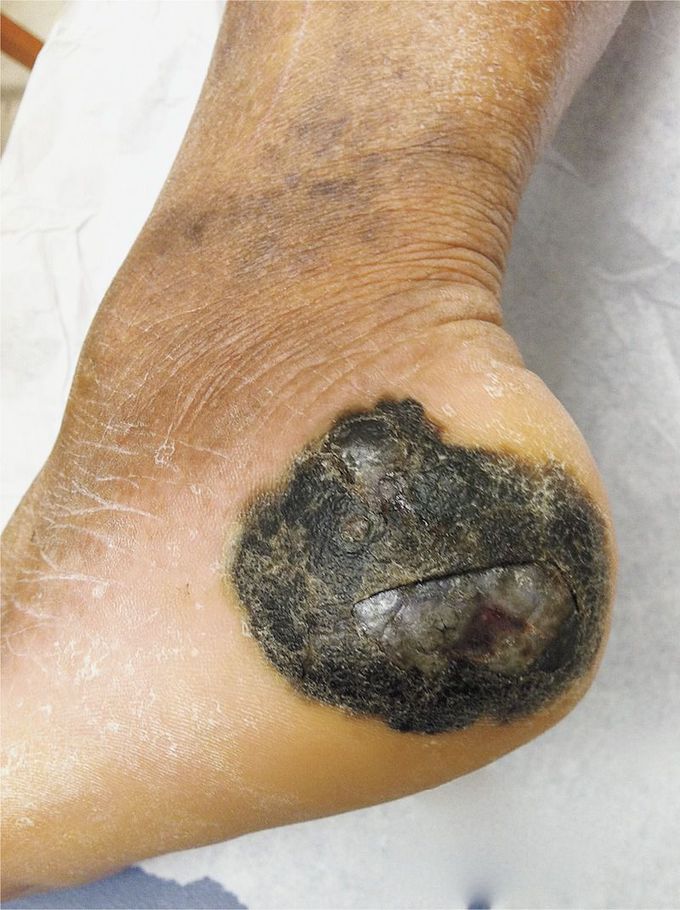


Acral Lentiginous Melanoma
A 68-year-old man presented with a 2-year history of a nonhealing ulceration involving the lateral aspect of the left heel. The physical examination revealed an ulcerated black plaque measuring 5.5 cm by 6.5 cm. An excisional biopsy showed an acral lentiginous melanoma with a Breslow depth of 2.0 mm. The patient underwent a wide local excision with 2-cm margins. A sentinel-lymph-node biopsy of the left inguinal nodes was negative. After 2 years of follow-up, there was no evidence of recurrence. Acral lentiginous melanoma is an uncommon variant of melanoma that typically occurs on the palms and soles. It is the most common histologic subtype of melanoma among black patients. Despite the higher incidence of melanoma among non-Hispanic white patients, black patients with melanoma (regardless of histologic subtype) are more likely to present with advanced-stage disease and are more likely to have lower survival rates than their white counterparts. The reasons for advanced disease at presentation are not entirely clear but are thought to be due in part to delays in diagnosis.

